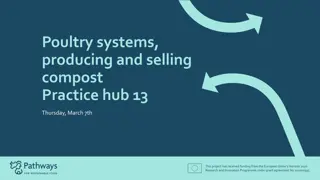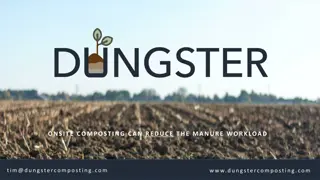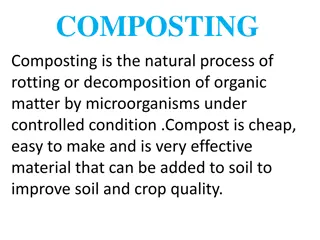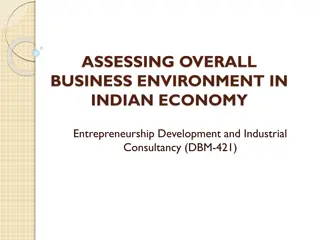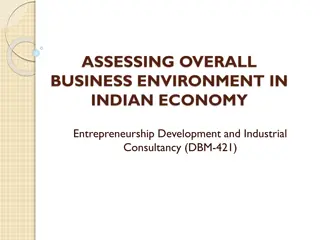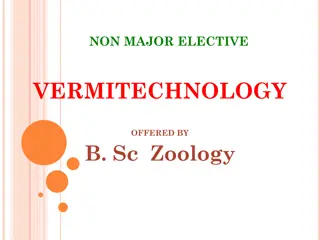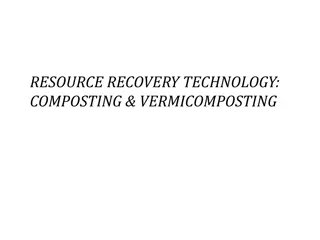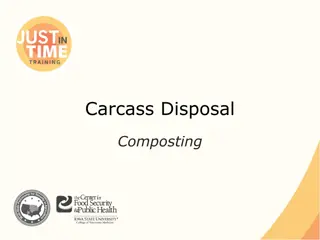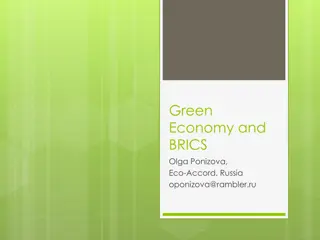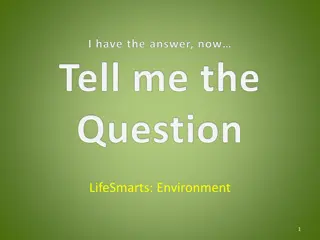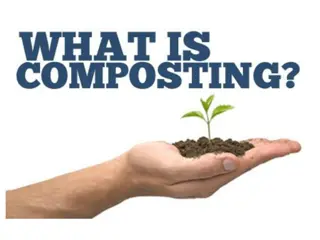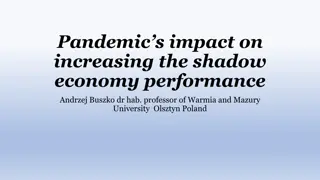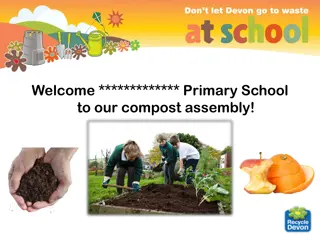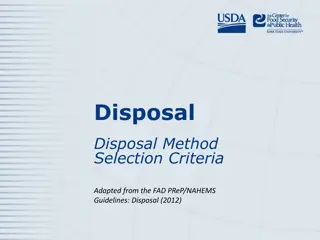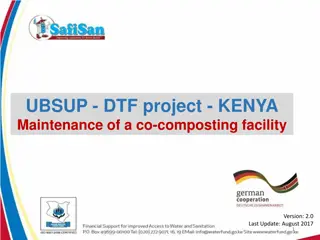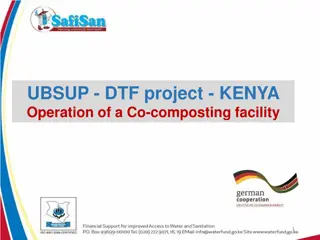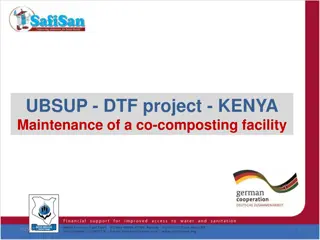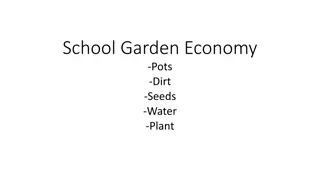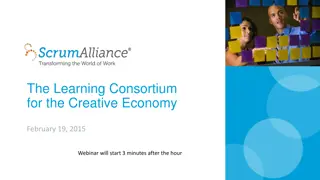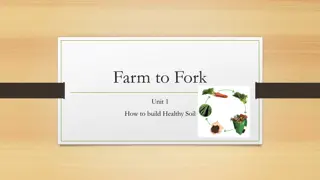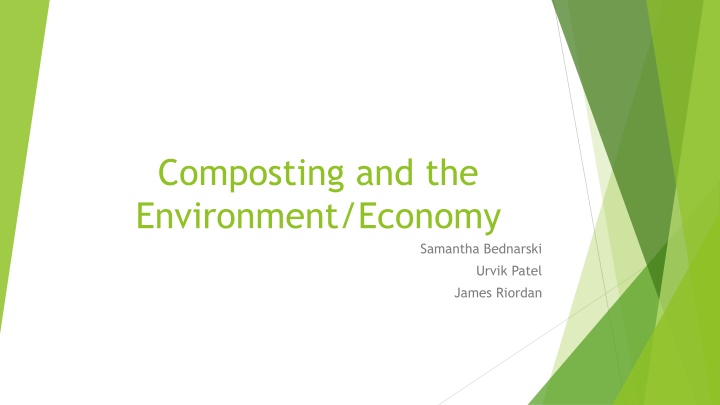
Composting for Sustainable Practices and Soil Health
Discover the benefits of composting, including its environmental impact, various methods like aerobic, anaerobic, and vermicomposting, as well as advantages and disadvantages. Learn about composting bins, composting toilets, and how this eco-friendly practice benefits the economy and environment.
Download Presentation

Please find below an Image/Link to download the presentation.
The content on the website is provided AS IS for your information and personal use only. It may not be sold, licensed, or shared on other websites without obtaining consent from the author. If you encounter any issues during the download, it is possible that the publisher has removed the file from their server.
You are allowed to download the files provided on this website for personal or commercial use, subject to the condition that they are used lawfully. All files are the property of their respective owners.
The content on the website is provided AS IS for your information and personal use only. It may not be sold, licensed, or shared on other websites without obtaining consent from the author.
E N D
Presentation Transcript
Composting and the Environment/Economy Samantha Bednarski Urvik Patel James Riordan
What is composting? Naturally decomposing and recycling organic materials into a rich soil. There are different types of composting such as: Aerobic Composting Anaerobic Composting Vermicomposting
Aerobic Composting Using air to compost. Uses nitrogen rich waste to grow bacteria that creates high temperatures to break down organic material. High maintenance. Good for large amounts of compost.
Anaerobic Composting Composting without air. The waste is compacted to a point where only slow growing bacteria can survive. Takes years for organic material to break down. Creates a foul odor and harmful compounds such as ammonia and methane.
Vermicomposting The use of organisms such as worms, insects, bacteria, and fungi to decompose organic material. Oxygen and moisture are required Medium maintenance
Composting bins The bins include damp newspaper on the bottom of the bin. Then organic waste is placed in the bin followed by worms then more organic waste. Lastly covered by damped newspaper. Once all is placed in the bin is covered.
Composting toilet A toilet that uses aerobic processing to compost human waste. These toilets are used in areas with little water supply or no sewer system.
Advantages and Disadvantages of Composting Advantages Disadvantages Cheaper than other means of disposing organic waste Time consuming More land is needed Reduces the need for water Low nutrient value compared to commercial fertilizer Fertilizes and pesticides Protects against erosion Possible heavy metal contamination Enhances the nutrient value of the soil Protects against certain parasites and plant diseases
Economic Advantages Very affordable/do-able Easily implementable Lengthens the growth of crops The amount of money spent on garbage handling can be reduced if composting is more widely used Low cost alternative to conventional methods of cleaning contaminated soil
Environmental Advantages Recycling organic waste It revitalizes dried/ruined soil Keeps the air clean as more materials are reused rather than polluting Cleans up toxic waste from the dirt Aids in healthier crops Less space is needed in landfills if composting is used
References Adamcov , D., & Vaverkov , M. (2014). Biodegradation of degradable/biodegradable plastic material in controlled composting environment. Polish journal of environmental studies, 23(5), 1465-1474. Ramezani, L., Arjmandi, R., Moharamnejad, N., & Monavari, S. M. (2015). Eco-efficiency of biowaste management: case study of a tehran composting operation. Polish journal of environmental studies, 24(2), 665-672. Temporal-Lara, B., G mez, I., Navarro-Pedre o, J., & Raya, S. (2015). One-step extraction procedure as an easy tool for monitoring a full-scale composting plant. Compost science & utilization, 23(2), 128-134. doi:10.1080/1065657X.2014.984367 Guidelines for the management of plant health risks of biowaste of plant origin. (2008). EPPO Bulletin, 38(1), 4-9. doi:10.1111/j.1365-2338.2008.01167.x


